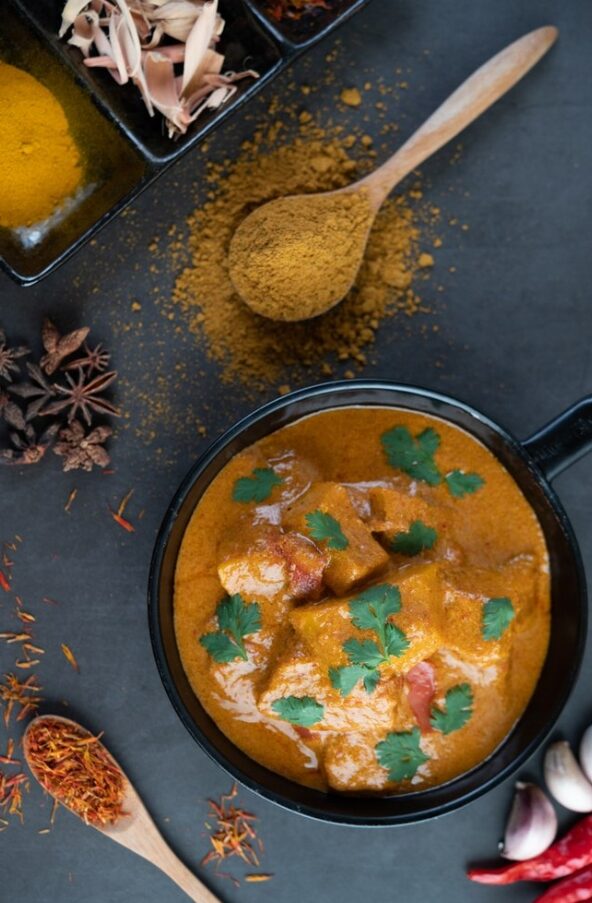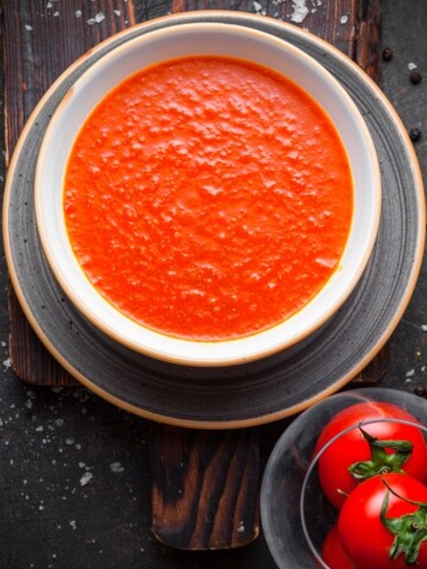Note
- For a smoky flavor, add a pinch of smoked paprika or char the chicken over an open flame.
- Leftovers can be stored in an airtight container in the refrigerator for up to 3 days and reheated gently with a splash of water or cream.
- Adjust the spice levels to your preference by adding or reducing chili powder.
Journey of Chicken Tikka Masala
From the Heart of India to the World’s Table
A worldwide culinary icon, chicken tikka masala, or CTM for short, is more than just a dish. Although it is up for debate, its roots are in the intriguing intersection of British influence and Indian tradition. As a symbol of comfort cuisine with strong tastes and a bridge across cultures, this creamy, spiced curry has won over hearts all over the world.
The Birth of Chicken Tikka Masala
The North Indian dish "tikka," which is a term for marinated, skewered, and grilled meat pieces, is the origin of chicken tikka masala. Indian cuisine has included tikka, which is often prepared in a tandoor, for millennia. Nonetheless, it is thought that the creamy tomato sauce that characterizes Chicken Tikka Masala was developed in the 1970s in the United Kingdom, most likely in Glasgow, Scotland.
According to the anecdote, a patron of an Indian restaurant asked for a sauce since they thought their chicken tikka was too dry. The chef created a sauce on the spot using tomato soup, cream, and spices that would permanently alter the way that Indian food was viewed overseas. Even though this story hasn't been confirmed, it captures the blending of Indian cooking methods with British tastes quite well.
Cultural Significance in India and Beyond
Tikka meals, which are frequently offered at weddings, festivals, and family get-togethers, are associated with celebration in India. But chicken tikka masala became a popular export. It symbolizes how easily Indian food can be adapted to fit into different settings while maintaining its core characteristics.
CTM also represents the impact of the diaspora on cuisine. A cuisine that appealed to Western palates while maintaining its origins was created by Indian immigrants in the UK who not only brought their spices and cooking methods but also modified them to suit local preferences. Because of its versatility, Chicken Tikka Masala became well-known in the UK, where it was renowned for being named the country's unofficial national dish in 2001.
The Ingredients That Define CTM
It is impossible to talk about Chicken Tikka Masala without mentioning how important spices are. Ginger and garlic add crisp, aromatic flavors, while turmeric, cumin, and garam masala add depth and warmth. The richness of the creamy foundation, which is created with heavy cream and yogurt, counterbalances the spices.
Before being put to the sauce, the chicken is grilled or charred after being marinated in yogurt and spices. This cooking technique gives the food a distinctive smokey flavor. The robust spices and the soft chicken are perfectly complemented by the tomato-based sauce, which is enriched with cream.
Modern-Day Popularity
Chicken Tikka Masala is so common these days. It is a standard on menus everywhere, from upscale dining establishments to quaint takeaway shops. The dish has gained popularity in the US, Australia, and other countries, although it is still especially well-liked in the UK.
Its attractiveness is influenced by its adaptability. Some variations include lighter versions made with coconut cream and vegetarian ones made with paneer or tofu. While maintaining the dish's core ingredients, contemporary chefs experiment with deconstructed variants.
Fun Facts About Chicken Tikka Masala
- It is estimated that more than 23 million portions of Chicken Tikka Masala are sold annually in the UK.
- The dish has inspired numerous recipes, including Chicken Tikka Masala pizza and pasta.
- Despite its Indian roots, CTM is often considered an essential component of British cuisine.
The Global Influence of Chicken Tikka Masala
More than just a dish, chicken tikka masala is a tale of innovation, migration, and adaptation. It demonstrates how classic recipes can change to appeal to new audiences without losing their essence. The dish serves as a reminder that food is constantly changing, bridging divides and fostering human connections, much like culture.
The sensation of eating Chicken Tikka Masala is the same whether you eat it with basmati rice or naan: it's tasty, soothing, and completely satisfying.
Thank You for Reading
Fusion cuisine's power is demonstrated by Chicken Tikka Masala. We appreciate you coming along on this culinary, historical, and cultural adventure with us. Keep in mind this dish's fascinating history the next time you cook or enjoy it.






